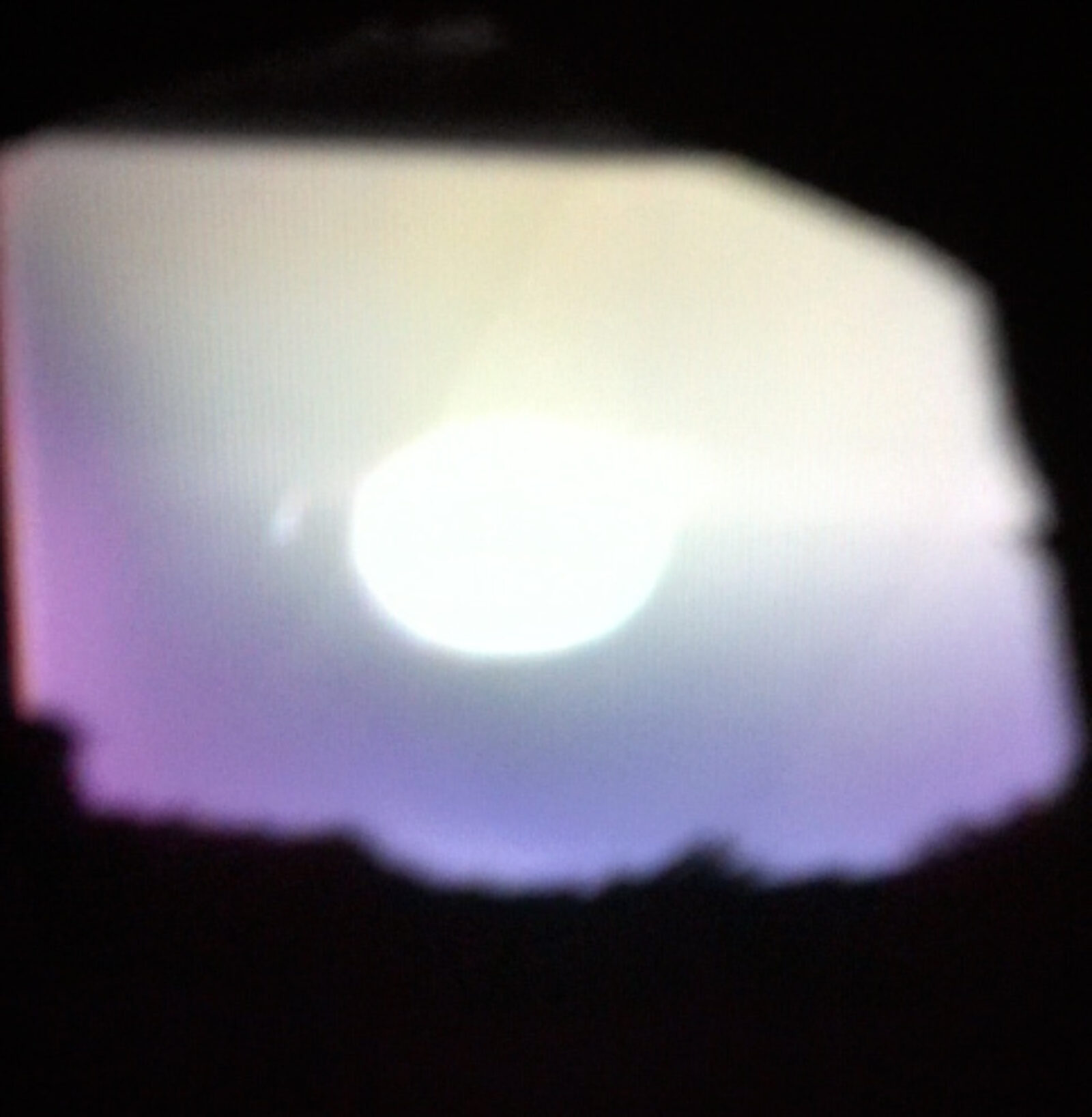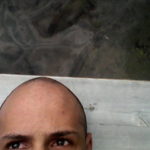





























featured gallery for November 2016
BLUR
On the occasion of Danspace Project's PLATFORM 2016: Lost and Found, Visual AIDS invited Will Rawls to curate the November 2016 web gallery. Special thanks to Ishmael Houston-Jones, Lost and Found co- curator.
While looking through the Visual AIDS Artist+ Registry archives, one is struck by the recurrence of blurry and out-of-focus images. Across media, the Registry holds photographs and video stills that are captured without conventional clarity. By bringing together both intentional, formal experiments by artists and incidental snapshots that document performances and interventions, Visual AIDS provides a rich example of how to regard bodies in motion and their staging of time.
Whether occurring partially or holistically across the surface of the image, these blurs enact the impossibility of holding still. In Derek Jackson’s Black Faggot #1, this impossibility is a forgone conclusion as he photographs himself while whipping around his body and hair. His dark skin, the white background and the chiaroscuro of light and shadow thwart the focal capacity of the camera lens. It is a portrait of a subject in flight. Other works, such as Jose Luis Cortes’s self portrait or Luna Luis Ortiz’s Chleo Quiet, hover moodily on the edge of stillness yet list into intimately captivating blears. They recede gently but encourage pursuit. My own eyes need to look and look again at these images and figures, reconsidering what is actually in focus and what must be filled in through guesswork. One’s participation in an image, for imagining points of entry and projection comes to life in moving through the BLUR gallery.
The edge between becoming indistinct and etching a vision is potently performed throughout the gallery, inviting a viewer to consider the enduring and material sense of time held within blurred images. Lapses in time and stillness ricochet through the gross or imperceptible movements of a body, which then imprint on the image. These are moments at which the hand of the artist or the body of a subject (sometimes one in the same) puts a tremor into photo technology and its limits. The results range from painterly to sculptural, but what strikes me most is the look of the kinetic within the photographic. What movement can do to self-portraiture is perhaps to lead it into speculations on accuracy and historical fidelity. Which is more accurate, the static and identifiable features of a face and a gesture, or the knowledge that this face or gesture will always be elusive to memory, as it was in the moment of capture?
The kinetic is a strange medium. One of dance’s most consistent effects is that of throwing the body into question rather than apprehending it—while in motion, a body’s potential meanings multiply as we witness an elision of habits, intentions, biology, feeling and self-awareness. The photographs in this BLUR gallery could be seen as small choreographies, where photographic inscription is smudged by a concert of light, action and ephemerality. The close and shivering quarters of photography emerge in the affective exchange between artist, subject and device.
Can we always get closer to these subjects and these artists through a sense of movement, through the unfurling of liveness at the moment of image construction? Not necessarily. The blurry and the indefinite, and by extension the kinetic, can also work as a strategy for phantasmatic distortion and distance. In Aaron Kissman’s untitled self-portrait (queer bait series) and Rebecca Guberman-Bloom’s To Spare the Sparrow, one sees corporeal figures in states of visual stuttering; colors and edges bleed into grotesque or dysmorphic forms. These imaginary beings, wrought from color filters and post-editing, keep us at the threshold of participation, welcome as far into these uncanny worlds as we can imagine our way. This uncanniness resists a real sense of time and place as much as this gallery's other photos embrace it. Together it seems that these images both resist a conventional sense of history and place while nonetheless dynamically embodying time through their kinetic sweep.
Elsewhere in this gallery, temporal and historical resistance show up differently. Grainy, blurry video stills from political actions such as Robert Getso’s ACT UP NY, March on Washington, 1987 or performances such as Raphael Sánchez’s REVOLVER leave ghostly traces of live events. These video stills, though blurry, seem more static than the hazy photograph of Kelvin Atmadibrata’s performance, The Smoker Who Watches a Cross Burning on a Boat. Perhaps the Getso and Sánchez examples make us hyper aware of how a still photograph interrupts the fluidity of time-based documentation—it has the effect of eliminating the original kinetic presence of the video rather than enhancing it. These digital snapshots that "document" documentation feel divorced of the physical tremor of the artist or audience member, replaced instead by the sure-handed archivist's agenda. As a viewer we stand at a few layers of remove from the live moments of protest and performance—witnessing an exchange between video document and the digital eye that will preserve and freeze some fragment of it. I feel more like a voyeur than participant, acknowledging too the additional layer of remove of never having "been there" in the first place. The still image performs a different sense of temporality—one of historical distance rather than closeness.
Somehow, the hand that snapped Atmadibrata's performance trembled such that the glow of the burning boat engulfs Atmadibrata’s body and the camera lens. Marguerite Van Cook’s Morpheus Loves Persephone provides an exciting departure from this video still / photo divide by stepping right into it. She collages grainy video stills into four-square formats, causing the eye to dance across their relations. Digital stillness is tossed into a flurry of movement among blurry subjects.
Although the video stills seem to exacerbate the feeling of having missed something, what is crucial about these stills is the fact that they are included at all. It is a choice by which the Visual AIDS Registry becomes a places to witness documents of the past alongside the lively contribution of kinetic and obscure.
